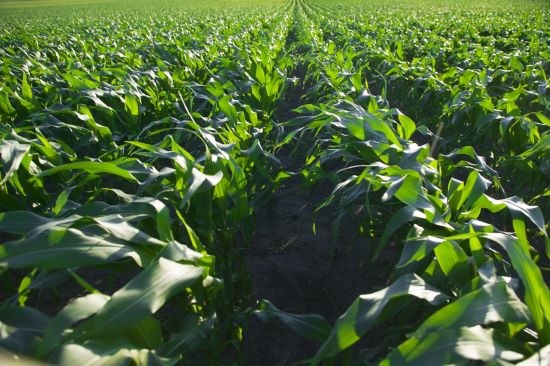The latest article on “corn sweat” stopped me in my tracks. Is this a thing? It turns out it is becoming a real problem for humans living in proximity to the crop in the American Midwest.
Corn sweat is caused by evapotranspiration from the plant being exacerbated by rising atmospheric temperatures. For every one degree Celsius (1.8 Fahrenheit) temperature rise the atmosphere’s water vapour capacity increases by 7%.
A paper published in 2003 looked at the physics of atmospheric moisture. It noted that the warming of the atmosphere over the oceans meant that even more water was entering the atmosphere than just on land. Evapotranspiration and evaporation rates have been rising since the 1970s and pose a climate change problem.
Why is that? Because water vapour is a potent greenhouse gas, in fact, even more potent than carbon dioxide (CO2). For a comparison water vapour accounts for 50% of the total atmospheric greenhouse effect, and clouds contribute 25% while at the same time reflecting solar radiation. Clouds are followed by CO2 which contributes 19% with the remainder coming from ozone at 4% and other gases of which methane is one, trailing at 3%.
For farmers, water vapour contributes to rain which is a good thing. Rain produces humidity and when absorbed by plants contributes to evapotranspiration rates. That’s how corn sweat happens. As more water evaporates from the leaves and corn stock the greater the greenhouse gas impacts a farm’s microclimate. Because corn is a monoculture crop widely planted in the American Midwest, (just take a drive through Iowa and you will see what I mean) the phenomenon of corn sweat goes from micro to macro.
But isn’t sweating a way for a body to cool? When we sweat because it is hot it cools our skin. The same is true for corn but as it sweats it releases the water vapour into the air which increases relative humidity. With the U.S. Midwest recently experiencing heatwaves and heat indexes that are off the charts, higher relative humidity represents a threat.
The heat index is a calculation combining temperature and humidity. Sweating corn increases relative humidity and rising atmospheric temperatures exacerbate the condition. The combination doesn’t hurt the corn but has unhealthy consequences for people living where it is grown.
A 2020 study done by researchers at the Harvard-Smithsonian Center for Astrophysics showed that elevated moisture from crop evapotranspiration aggravates heat waves and causes enhanced daytime heat indexes that average 3.3 Celsius (5.9 Fahrenheit) above actual temperature readings. Afternoon heat indexes are the worst at 5 Celsius (9 Fahrenheit) above the thermometer reading.
Why doesn’t this happen where corn and other monoculture crops are grown? Farms don’t distribute plants the same way nature does. The corn monoculture features plants row on row (see picture above).
Then there is the fickleness of precipitation. Many parts of the Midwest have experienced drought conditions. Farms increasingly rely on irrigation to maintain the crop. Irrigation combined with the increased water-carrying capacity of the atmosphere and farm monoculture produces lots of plant sweating. The water vapour that accumulates over farms with a crop of corn can have up to a 40% higher moisture capacity, therefore, than where crop planting is mixed and diverse and includes woodlots. You don’t see too many of those kinds of farms in the Midwest.
What about other monoculture crops? Do they produce the same heat indexes as corn? The answer is yes. The big three others are soybeans, cotton and rice. Soybeans sweat almost as much as corn growing in similar conditions. Cotton sweat goes on longer than corn which is most pronounced in the Midwest through July and August. With cotton having a longer growing season it sweats longer as well.
The king of crop sweaters, however, is not soybeans, cotton or corn. It is rice which requires more water than any of the others to grow. Paddy rice is grown in flooded fields adding evaporation to plant evapotranspiration. Where field rice is not grown in paddies its evapotranspiration signature is not too dissimilar to soybeans and corn. Of course, rice is not an American Midwest crop. Paddy rice is grown in the tropics and subtropics. In these environs, rice has evapotranspiration rates similar to native plants.
The consequences of corn and soybean sweat for people living in the Midwest are significant. At a temperature of 30 Celsius (86 Fahrenheit) with 80% relative humidity, the heat index is equivalent to a temperature of 49.4 Celsius (121 Fahrenheit). If outdoors, it means an increased risk of heat exhaustion, stroke and dehydration. For outdoor workers, pregnant women, the elderly and people with underlying medical conditions, indexes this high are deadly.
Sweating corn, therefore, isn’t just a thing, it is a growing public health concern and one more to be added to the list as we attempt to mitigate and adapt to our changing planet in the Age of Climate Change.








